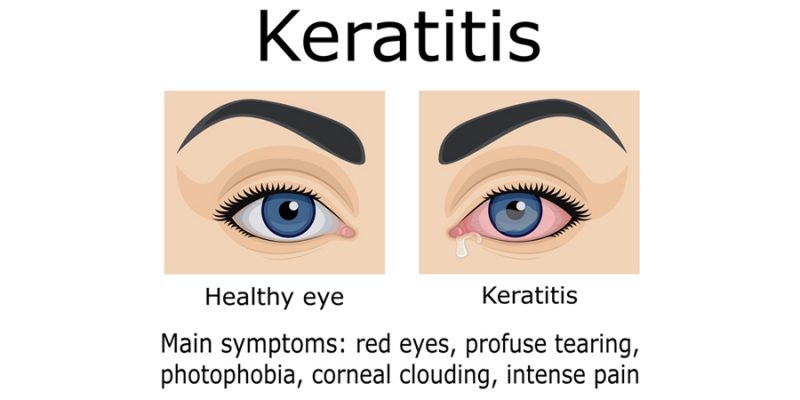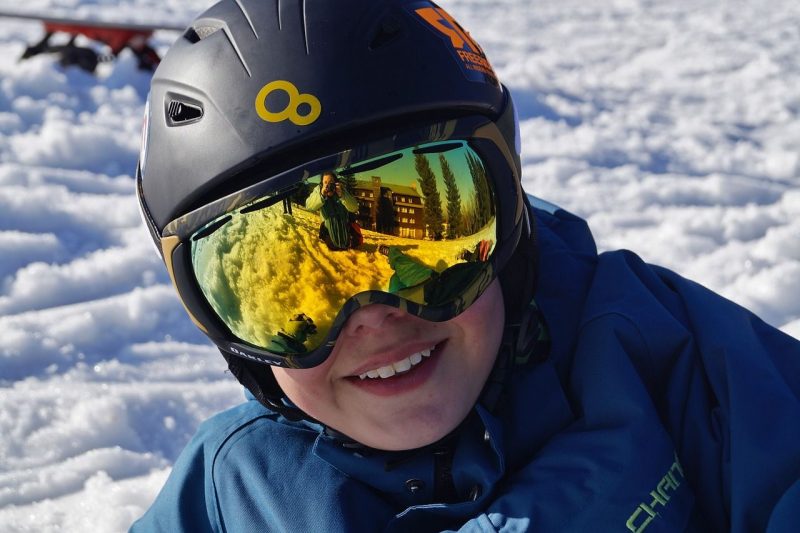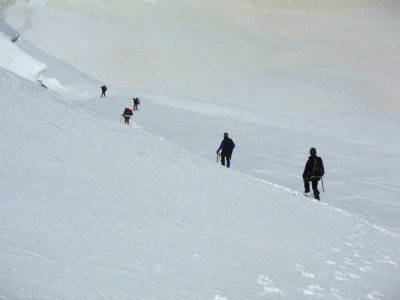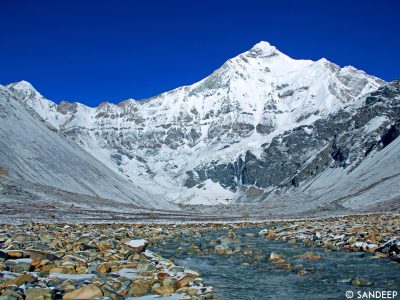What is Snow Blindness?
Snow blindness is a painful eye condition where the sun’s ultraviolet rays burn the cornea, which can also lead to temporary or permanent blindness. The condition comes from being in the snow for too long when there is snow glare.
Snow blindness occurs if you do not wear sunglasses or protective goggles, and the ultraviolet rays reflected by the snow come into direct contact with your eyes.
The condition can develop in as little as 30 minutes of exposure to ultraviolet light reflected by snow.
The cornea (the transparent layer at the front of the eye that covers the pupil) becomes incredibly painful and can burn or redden. It is also possible for the cornea to swell near the edges, making it difficult to open your eyes. This condition may become so severe that you cannot see even though your eyelids are open. The severity of this condition will depend on how long you were exposed to the ultraviolet rays of sunlight reflected by snow and how long you could not get out of the sun.
Snow blindness typically develops in areas where there are vast expanses of snow or ice, such as ski slopes, polar regions, open oceans, mountain ranges, Himalayan treks, etc.
Also Read: Things To Carry On A Himalayan Trek – Packing List
Symptoms of snow blindness

These are some of the symptoms of Snow Blindness:
- Pain and burning sensation in the eyes
- Sensitivity to light (photophobia)
- Inflammation of the cornea (the front, outer covering of your eye)
- Severe headache (concentrated behind the eyeballs)
- Blurred vision
- Swelling around the upper and lower eyelids
Symptoms of snow blindness may be experienced gradually, but they are likely to get worse over time. If you are in a situation likely to cause exposure to ultraviolet rays reflected by snow, then you should wear protective eyewear to protect your eyes against these rays. The more severe the symptoms, the longer you must stay out of sunlight to avoid permanent damage. Furthermore, you are recommended not to rub your eyes while experiencing any symptoms (even if unable to open them).
Temporary snow blindness can lead to corneal ulceration, resulting in permanent visual loss. This is much more common in severe cases of snow blindness.
Causes of snow blindness
Snow blindness (Medical Name – Photokeratitis) is caused by ultraviolet rays from the sun’s reflection on snow and ice.
The cornea is responsible for about 70% of the eye’s light-filtering capacity. This light passes through the eye’s cornea, which absorbs most of this energy. When the cornea is exposed to ultraviolet rays, they cause swelling and pain in the eye.
Treatment for Snow Blindness
Many snow blindness cases go away on their own in a few hours, and symptoms usually improve quickly after you get out of the sun. But you have to be careful since the condition can lead to severe damage if it is ignored.
If snow blindness is left untreated, severe damage can lead to permanent blindness.
If you are experiencing symptoms of snow blindness, then it is recommended that you wear sunglasses or other protective eyewear to block out the sun’s rays.
The condition will most likely go away on its own in a few hours, but you can speed up the healing process by using eye drop medication.
If symptoms of snow blindness persist or worsen, then it is best to seek medical attention from a hospital and rest until the symptoms go away. The treatment includes avoidance of bright light and pain relief.
Prevention for Snow Blindness

Use sunglasses, goggles, or other protective eyewear when you are outside in sunny conditions that may cause sun rays reflecting from snow to come into contact with your eyes.
Wear sunglasses when skiing or trekking, especially during the daytime.
Purchase high-quality ultraviolet-filtering glasses which block both UVA and UVB rays. These glasses will help protect your eyes against snow blindness.
Drinking lots of water when not exposed to sunlight is also important so you do not get dehydrated.
You should also see that your sunglasses are in good condition and take care of them, so they do not break or scratch during use.
Knowing the different symptoms of snow blindness and how they can be prevented is important. We hope you’ve found this article helpful, and we wish you good luck protecting your eyesight!





[…] There are risks associated with being exposed to the sun’s rays without protection, such as snow blindness. You can read more about it snow blindness here. […]